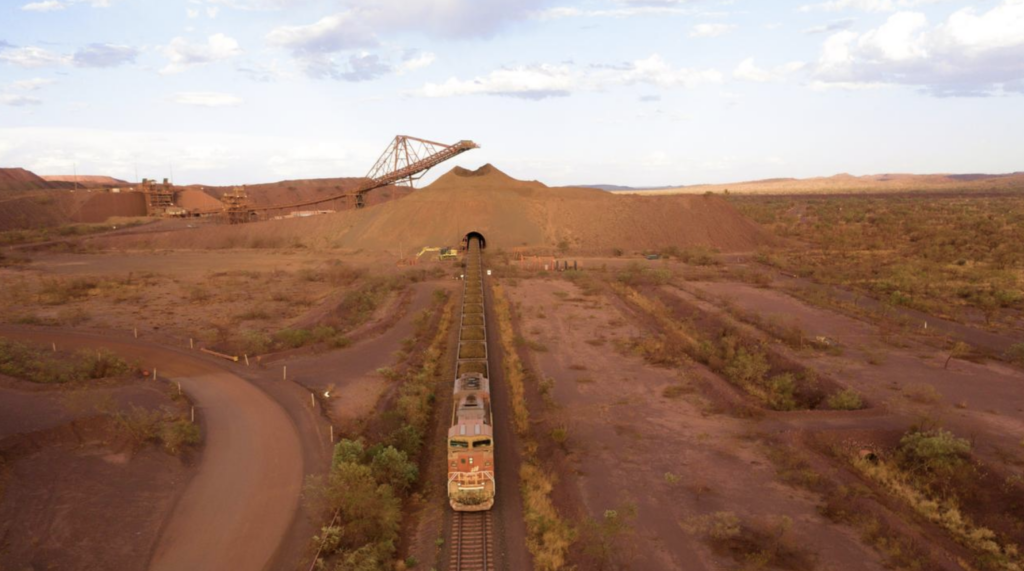

Article by Robert Gottliebsen courtesy of the Australian.
New IR rules mean the nation may miss out on a new boom.
Government policy will force BHP, Rio Tinto and a number of other large miners to invest overseas the wealth they are generating from Australian projects. The long-term consequences for the nation are profound.
Since Australia discovered gold in the 19th century, the nation has been a world leader in mining. And for the last half century mining wealth has underwritten the standard of living, including funding social services that are world-class.
The world is now embarking on a new mining boom driven by electrification, and Australia has the chance to again be a major beneficiary. History will not judge the Albanese government for misleading the country on tax cuts, but rather for taking us perilously close to missing out on this new mining boom by making it uneconomic for the wealth of the nation’s iron ore and other minerals to be invested back in Australia.
Accordingly, unless Anthony Albanese grasps what his government has done while he was overseas, our two largest miners plus a string of others will invest most of their cash offshore. People have no idea this is happening. Even though he has broken his word, I was horrified at the Australian Open that tennis fans booed an Australian prime minister at a world event.
But when the nation discovers that his government has taken steps that, unless reversed, will inevitably cut the wealth needed to provide social services, the boos will be much louder and longer.
The ALP/Greens/Pocock/Lambie parliamentary group passed legislation to make it highly likely that high-cost legacy work practices that are still operating in small parts of the iron ore mines will spread not only to the current iron ore operations but other mining ventures that BHP and Rio may pursue in Australia.
Most long-established large miners in Australia have these legacy agreements and are also vulnerable. Exactly how the legislation will work is yet to be determined, but on the front line of mining projects likely to be affected is the nation’s largest new development – the South Australian copper basin.
Both BHP and Rio have isolated copper as the major metal to benefit from global electrification.
Rio has five key copper projects – Mongolia, Kennecott (in the US), its Chile leases and the two mines it shares with BHP-Escondida in Chile and the yet to be approved US Resolution mine.
Currently, iron ore dominates Rio’s earnings, but in five years’ time copper will dominate. It is developing a small copper mine in Western Australia, but must be grateful that none of its other copper projects are subject to the government’s legislation.
BHP’s current major overseas copper projects are in partnership with Rio. At Escondida in Chile, Rio has a minority interest, while in the US Resolution mine, Rio is the controlling partner. Resolution still awaits approval, but will move ahead quickly if Donald Trump becomes US president.
The “Big Australian” decided that South Australia would be its global spearhead in the looming world copper boom. It added OZ Minerals to its operations in South Australia and is looking at an enormous networked mining and smelting operation The spread of the legacy iron ore work practices will make the BHP WA iron operations more costly and less productive, but can be afforded because of the high margins in iron ore and automation. But the legislation means the work practices could apply to underground mining in South Australia, which would make the giant project uneconomic unless the copper price jumps or there is a technology breakthrough.
Add that to the environmental policies of the Albanese government that prevent low-cost uranium development to help fuel the proposed smelter and there are now two big hurdles for the South Australian project to overcome.
Absurdly, in theory, OZ Minerals should have taken over BHP’s South Australian operation because it was not burdened with legacy work practices.
Rio has emerged in much better copper shape than BHP. Rio’s Mongolian operation is heading towards being No.4 in the world and in Escondida Rio’s so-called Nuton bacteria-based heap leaching technology is being tested.
If it can be used at scale, it will transform the Escondida operation and greatly reduce its carbon footprint. BHP will benefit.
Conceivably, Rio may allow it to be tested in South Australia, although rival technologies are equally advanced in Australia.
Unless technology transforms the South Australian operation, its costs will be substantially higher than rival mining projects around the world, including Mongolia and Escondida and Resolution.
BHP selected nickel as its second entry into the electrification boom. But the company has run up against the Chinese developing Indonesian nickel, plus a deep fear spreading around the world nickel market that many modern Chinese batteries will not include nickel.
Combine that with imposing the legacy work practices on the former OZ Minerals nickel project, and it becomes a bleak prospect.
Next year, Glencore will shut down copper operations at Mount Isa, Western Australia’s alumina plant is to shut and Rio’s huge Gladstone complex has been written down to nil.
Aluminium will be a big beneficiary from electrification and Rio is punting that eventually Canberra will understand that the rules of global competitiveness require modern policies. Once Gladstone is shut, it can’t be replaced. Rio is backing that Australia will wake up, so it’s planning to source about 13 per cent of its Gladstone energy via solar.
No one would today consider building a “Gladstone” in Australia, given the current Canberra policies. But Rio can see enormous overseas profits coming from copper, so can afford to punt that eventually Canberra will change. Alumina in WA did not take that punt.